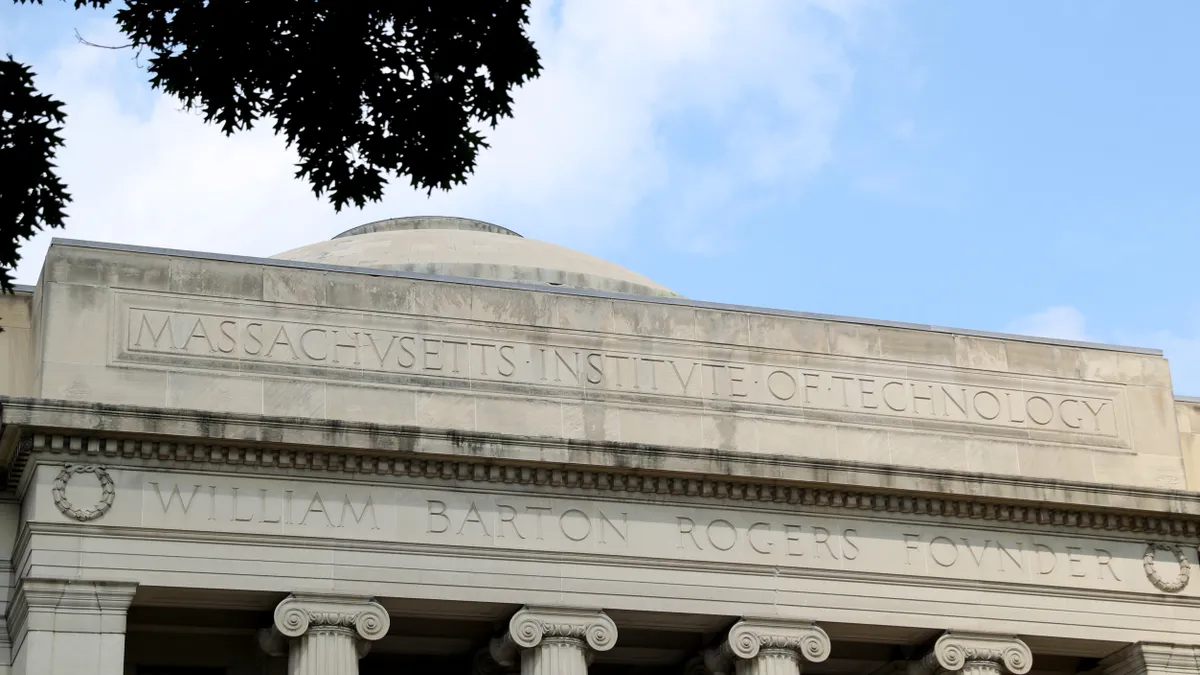Dive Brief:
- Presentation College said Tuesday that it will soon shut down, ending the run of the small nonprofit in Aberdeen, South Dakota, which was founded more than seven decades ago by an order of Catholic nuns seeking to provide nursing education to boost rural healthcare.
- Before the COVID-19 pandemic, college leaders started evaluating their prospects for increasing enrollment, which totaled under 600 students in fall 2021. But the college faced challenges including a high dependency on gifts and tuition revenue, a remote location that's hard for out-of-state students to reach, and the pandemic.
- Presentation won't enroll new students for the 2023-24 academic year. It will shut down its Aberdeen campus operations after the upcoming spring and summer sessions and transfer an online nursing program it operates to a Catholic university in Iowa.
Dive Insight:
Several of Presentation College's key metrics mirror those of other stressed or closing colleges. It's small, it has been losing enrollment, and it has been increasingly discounting tuition.
The institution enrolled 821 students in fall 2016, according to federal data. But its student body shrank steadily since then to just 577 five years later.
Presentation discounted tuition at increasing rates over that time period, its audited financial statements show. In fiscal 2016, it listed $3.5 million in scholarships and grants versus $13.8 million in topline tuition and fee revenue. By 2021, scholarships and grants totaled $4.3 million against $11.8 million in tuition and fee revenue.
In other words, the college went from not collecting 25 cents for every dollar it charged in sticker price to forgoing 36 cents, even as it enrolled fewer students.
"After careful evaluation of the sustainability of the College’s academic programs, and a thorough review of alternatives, the Board of Trustees and Presentation Sisters reluctantly decided to close the physical campus and implement Teach-Out programs as the most responsible way to steward students’ pathways to completing their degrees," Sister Mary Thomas, president of the Presentation Sisters Corporate Board, said in a statement Tuesday.
The university has teach-out agreements in place with the University of Mary, in North Dakota, Olivet College, in Michigan, and St. Ambrose University, in Iowa. It's seeking additional teach-out partners.
St. Ambrose is also taking on an online bachelor of science in nursing program operated by Presentation. It will become known as the Nano Nagle Online School of Nursing at St. Ambrose University, named for the founder of the Presentation Sisters.
"St. Ambrose University’s state-of-the-art nursing program is a natural fit with Presentation to create the Nano Nagle Online School of Nursing, ensuring the legacies of the College and the Presentation Sisters," Presentation College President Paula Langteau said in a statement.
Most Presentation programs will end after the spring semester. A practical nursing program will run through August.
Presentation is shutting down after closing a branch campus in Fairmont, Minnesota, where it started operating in 2003. The institution closed that branch in 2021.
When the branch closure was announced, Vice President for Academics Diane Duin pointed to low application numbers and increasing local competition. Duin told the Fairmont Sentinel the college had "opportunities for online learning." As of 2019, the branch had enrolled about 50 students.
Presentation College joins a growing list of institutions to close or announce plans to shutter in the wake of the pandemic.
Among them are several other Catholic institutions. In the last year, two in California, Holy Names University and Marymount California University, decided to close. Chatfield College, a two-year institution in Ohio, opted to stop operating as a higher education institution and turn into a nonprofit group trying to improve degree attainment. And St. John's University laid plans to close a campus it operates on Staten Island, New York, after the spring 2024 term.
In each of those cases, college leaders pointed to declining enrollment. They often also cited rising expenses and pressures exacerbated by the pandemic.
Numerous factors challenging small private colleges existed before the pandemic. Pressures stemming from college costs, student price sensitivity and economies of scale in operations predate the crisis. So do declines in birth rates around the Great Recession that have long been predicted to drive down the overall number of high school graduates available to enroll in college in many parts of the country.
But colleges were temporarily buoyed by millions of dollars apiece in federal pandemic relief funding. That money was generally most valuable to institutions under the greatest preexisting financial stress.
Now no more aid is coming, leaving college leaders still worried about risks that enrollment constraints pose to their business models. Institutions with noncompetitive admissions are generally considered most likely to lose enrollment and the important net tuition revenue it drives.















